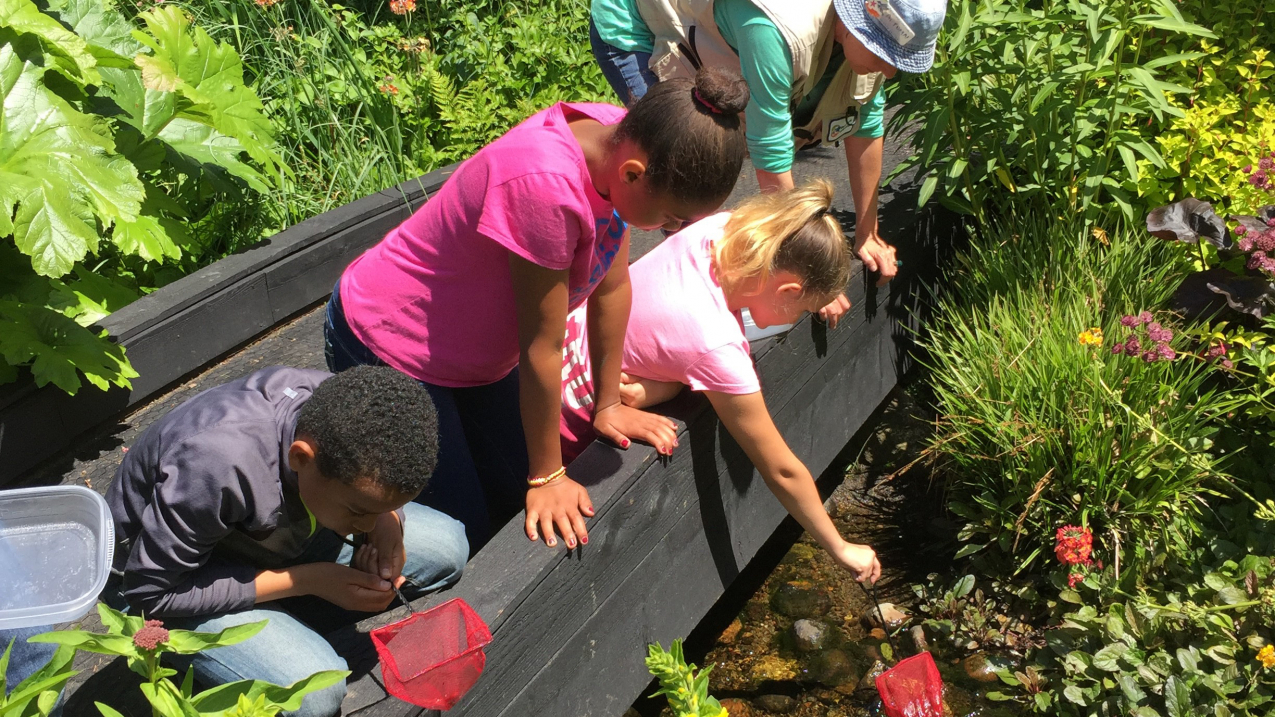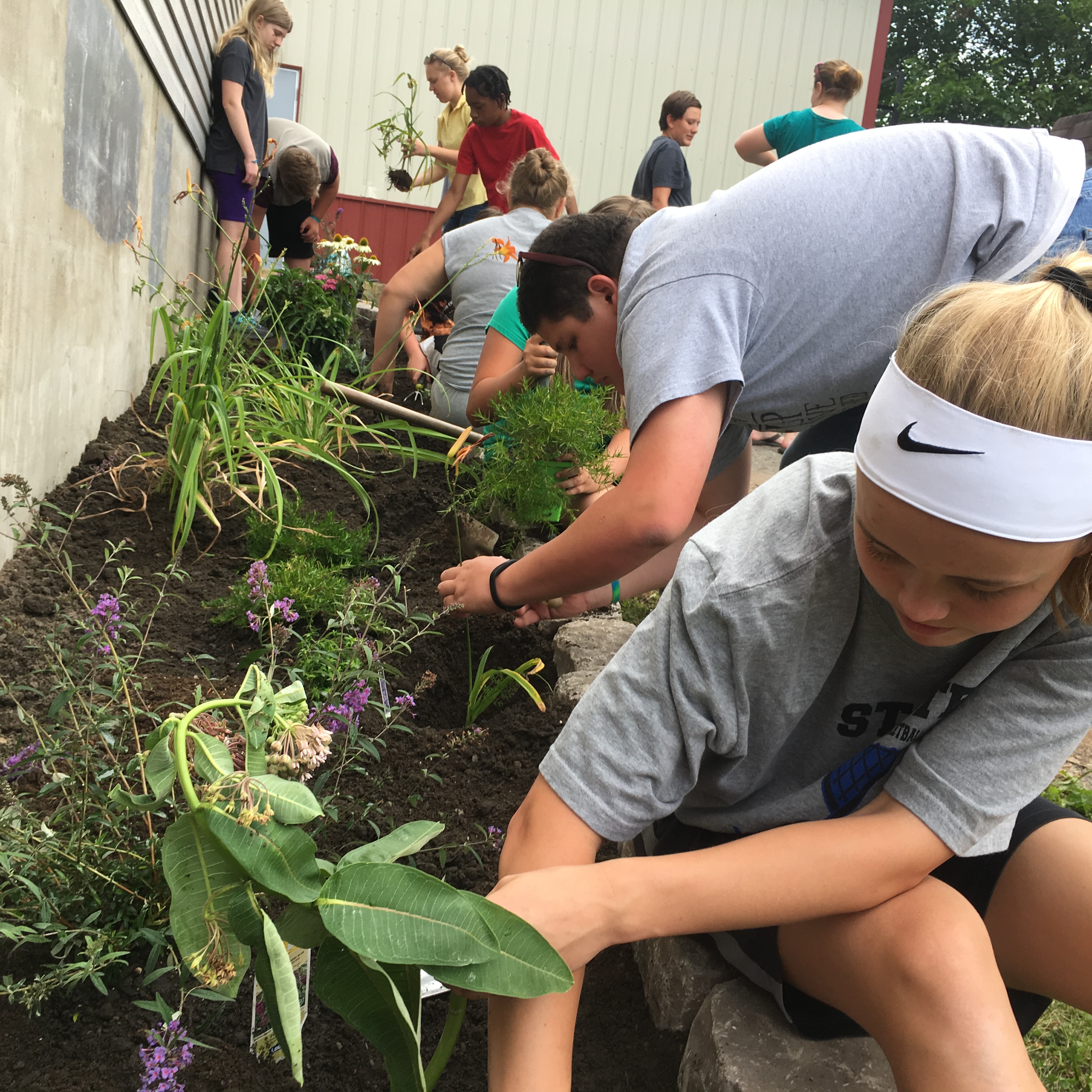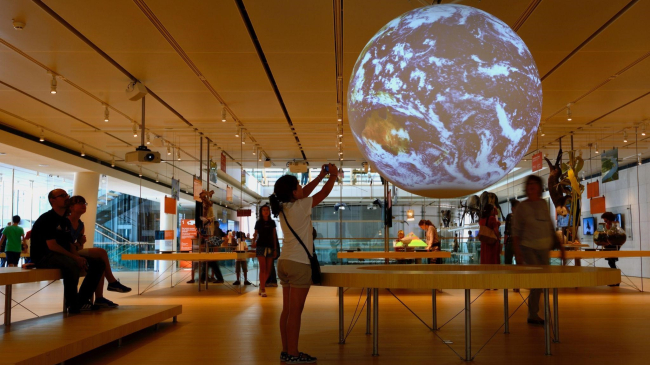The Waterbury Public Schools District is one of the lowest performing districts in Connecticut, and 72.5% of their students qualify for the free or reduced price lunch program. This summer, 75 Waterbury students from grades three to five and their teachers discovered watershed science and explored nearby Long Island Sound and Candlewood Lake with EdAdvance, an education provider that worked with the schools to present “WoW! The Wonders of Watersheds.” Academic enrichment activities like WOW that complement regular academic programs are a great asset for students in underserved schools.

Star Lake Elementary and Totem Middle School students work with the Environmental Science Center to sample macroinvertebrates at a field study site in Washington state as part of a 2017 NOAA-21st CCLC Watershed STEM Education Partnership Grant. (Image credit: Environmental Science Center)
Thanks to a NOAA and Department of Education out-of-school pilot program, these students and over 1,500 others across the country had access to high-quality, watershed-focused STEM education in 2017.
Out-of-school programs encourage student interest in learning and engage students who might not otherwise have the opportunity to participate in STEM activities. The U.S. Department of Education’s 21st Century Community Learning Centers (21st CCLC) program is the largest out-of-school program in the nation, serving over 1.5 million students—particularly those who attend high-poverty and low-performing schools—in all 50 states. In 2017, the U.S. Department of Education invited NOAA to join a federal initiative to support STEM activities at these 21st CCLC sites. As a result, NOAA and the National Marine Sanctuary Foundation offsite link developed a pilot grant program to provide 21st CCLC sites with authentic STEM experiences using components of NOAA’s Bay Watershed Education and Training (B-WET) Meaningful Watershed Educational Experiences (MWEEs).

MWEEs are locally relevant, authentic experiential activities that include learning both outdoors and in the classroom, and they aim to increase the environmental literacy of all participants. Through this new collaboration, experienced B-WET MWEE providers worked with 21st CCLC sites to provide academic enrichment experiences to students and capacity-building to educators. NOAA resources were used to increase participants’ understanding and stewardship of watersheds and related ecosystems. By following the MWEE framework, STEM education was contextualized, emphasizing connections with students’ lives, choices, and communities.
In early 2017, the NOAA/21st CCLC pilot grant program awarded $500,000 to 17 pilot projects, impacting 37 sites in 15 states and all seven B-WET regions. Over 1,600 youth and 184 21st CCLC educators and staff explored and investigated their local watersheds during out-of-school time. The evaluation indicated that projects excelled at making activities relevant to students’ lives and improved students’ understanding and awareness of the local watershed. Pilot grantees also forged strong collaborations with local 21st CCLC sites, establishing relationships that have the potential to be sustained beyond the pilot program funding.



